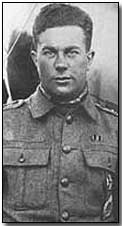Who's Who - Paul Bäumer
 Paul Bäumer (1896-1927) was
Germany's ninth-highest scoring
fighter pilot
of the First World War, achieving some 43 air successes in 1917 and 1918.
Paul Bäumer (1896-1927) was
Germany's ninth-highest scoring
fighter pilot
of the First World War, achieving some 43 air successes in 1917 and 1918.
Born in May 1896 in Duisburg Bäumer trained as a dental assistant prior to the war, although his seemingly mundane occupation was relieved by an early interest in civil aviation, attaining his pilot's license shortly before war broke out in 1914.
Enlisting with the German Army with the coming of war, Bäumer initially (and somewhat inexplicably) served with the infantry prior to his eventual transfer in 1917 to the air service.
Bäumer gained initial success as something of a 'balloon buster', bringing down three enemy observation balloons with Jasta 5 while flying an Albatross D.V prior to his attachment to the famed Jasta 2 squadron.
While with Jasta 2 (later known as Jasta Boelcke) he achieved a further 40 air 'kills', becoming the squadron's top-scoring pilot while flying Albatross Scouts (until March 1918: 18 victories), Fokker DR.I (until May 1918: 4 victories), Pfalz D.VIII (until September 1918: no victories) and Fokker D.VII (21 victories) aircraft.
Wounded in May 1918 following a crash-landing, Bäumer (known as the 'Iron Eagle') was also forced to evacuate from his aircraft in September 1918, landing safely however. As a consequence of his air service he was awarded both the prestigious Pour le Merite (Blue Max) and the Golden Military Merit Cross, one of just five to receive both awards.
Following the armistice Bäumer returned to dentistry but nevertheless continued to fly, forming a civil aircraft construction and pilot training company, Bäumer-Aero-Gesellschaft.
Bäumer was killed - drowned - following an air accident while performing an aerobatic display near Copenhagen on 15 July 1927. He was 31.
The "Blue Max" was a reference to the prestigious German Pour le Merite medal.
- Did you know?
